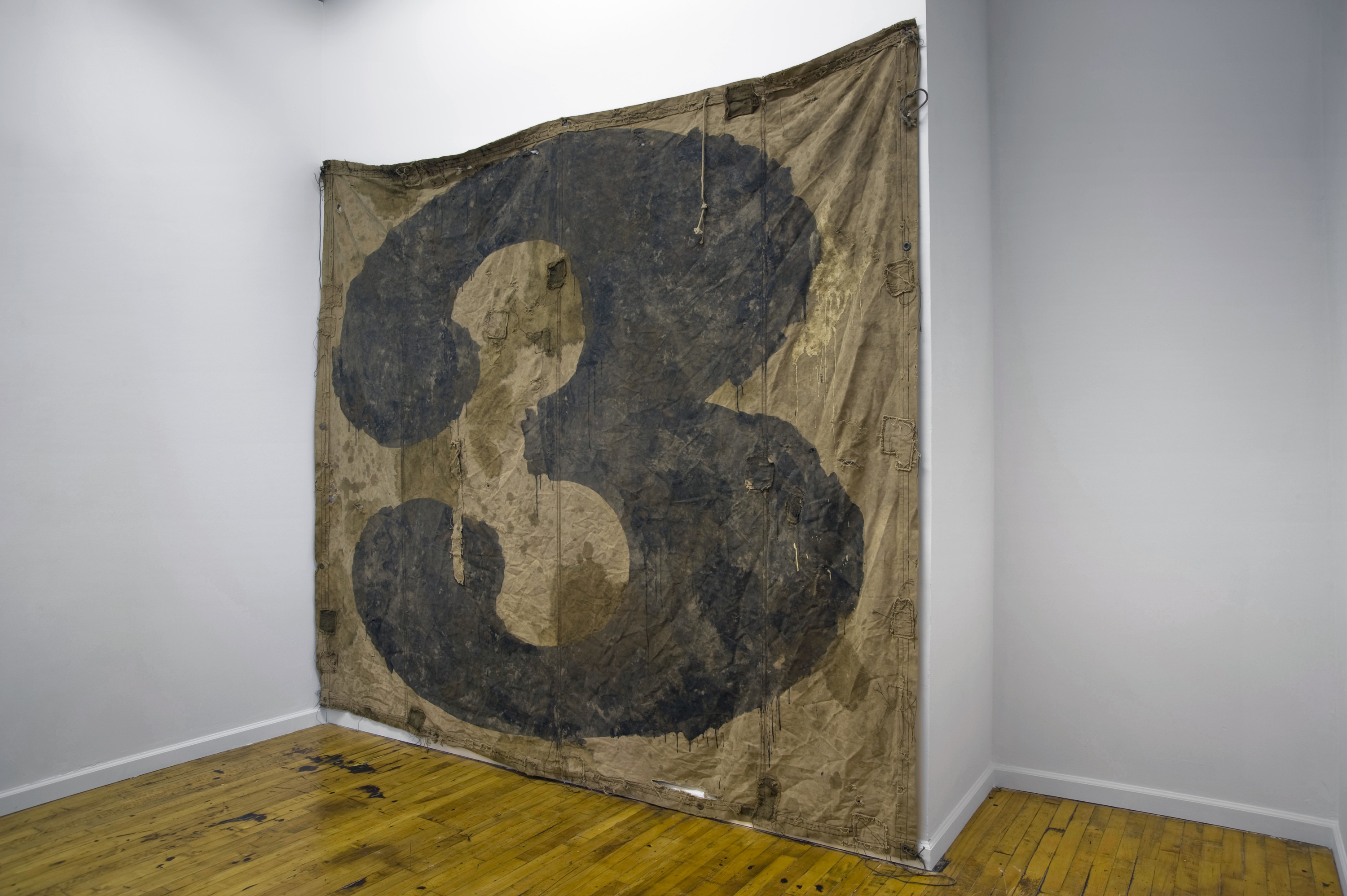
Gallery
Address:
119 N Peoria St, #2A
Chicago, IL 60607
312.480.8390
Gallery hours:
Wednesdays - Saturdays
11am to 6pm
send email
Show dates:
September 5 to November 15, 2008
Opening Reception:
Friday, September 5, 5 to 9pm
In Gallery Two
Dead Center / Marginal Notes:
Holt Quentel
Curated by John Neff for Western Exhibitions, Chicago
Holt Quentel
detail of "Black 3 Gesture (B/W) Rope", 1989
Latex, canvas, rope
98 x 114 inches
Collection of Linda & Stefan Stux, Courtesy Stux Gallery, New York
Dead Center / Marginal Notes: Holt Quentel is the fourth in a yearlong series of shows curated by John Neff for Western Exhibitions' Gallery Two. Each show in the program will present one piece each by two artists or a small selection of works by a single maker. All of the works exhibited will deal – directly or indirectly – with the relationships of centers to margins (culturally, geographically, politically and within works themselves as a formal concern). The fourth show in the series, opening September 5th, presents artist Holt Quentel’s large-scale painting Black 3 Gesture (B/W) Rope of 1989.
After receiving her education in Chicago and Princeton, the artist Holt Quentel (American, born 1961) rose to sudden prominence in New York's art scene of the late 1980s. Typically, Quentel's works were large-scale unstretched paintings resembling battered awnings, signs and tarpaulins. In creating these works, the artist first handcrafted, and then carefully distressed, her canvases' surfaces. When first exhibited, the paintings' denial of a transparent relationship between process and appearance – a defining characteristic of painting after Minimalism – was often read through then-current theories of "simulation," notably Jean Baudrillard's notion that postmodern culture values impressions over actualities. Likewise, contemporary critics related the artist's frequent allusions to the history of abstract painting to the appropriationist tactics of 1980s photo-conceptualists and Neo-Geo artists.
However, as these paradigms of art criticism faded in the early 1990s, critical attention soured on Quentel's art. Her rapid career success was characterized as a symptom of 80s art-world excesses, and her work was dismissed as faddish decoration. Quentel's last solo exhibition was held at Stux Gallery in New York in 1992; shortly thereafter she left the art world. Although she may or may not continue to practice painting, there is no available record of Quentel exhibitions during the past sixteen years.
Despite her initial reputation as an avatar of modish "Simulationist" painting, Quentel's work evades easy categorization and is not hidebound by period concerns. Her pieces are replete with unexpected formal devices, moments of striking painterly expression and virtuosic trompe l’oeil surface treatments. Still, the paintings resist reification, and often appear to be waste products rather that calculated visual expressions. (In this last respect it is, perhaps, interesting to see Quentel as a precursor of Abject Art rather than an endgame appropriationist). The artist's paintings are not necessarily dreary Postmodern souvenirs of the lofty aspirations of twentieth century abstraction; they can also be read as meditations on the practices of attention that cause artifacts to shift into and out of legibility, and thereby of fashion. Rags to riches, and vice versa.
The alteration between the exemplary and the rejected embodied in Quentel's paintings was bitterly recapitulated in her career as an artist. Viewing Quentel's art from outside the frame provided by theoretical debates of the 1980s may surprise contemporary audiences with uncommon aesthetic encounters. Likewise, attention to the story of her career provides instructive insights into how meaning and status in art are the two forked extensions of a single movement; discourse constantly advances both effects towards – and retracts them from – specific art and artists with the quick, relentless flicks of critical tongues.
From the gallery essay by John Neff, 2008
The curator and Western Exhibitions wish to thank everyone at Stux Gallery for their assistance in realizing this project.
More on Dead Center/ Marginal Notes here
ALL IMAGES © WESTERN EXHIBITIONS & EACH INDIVIDUAL ARTI
